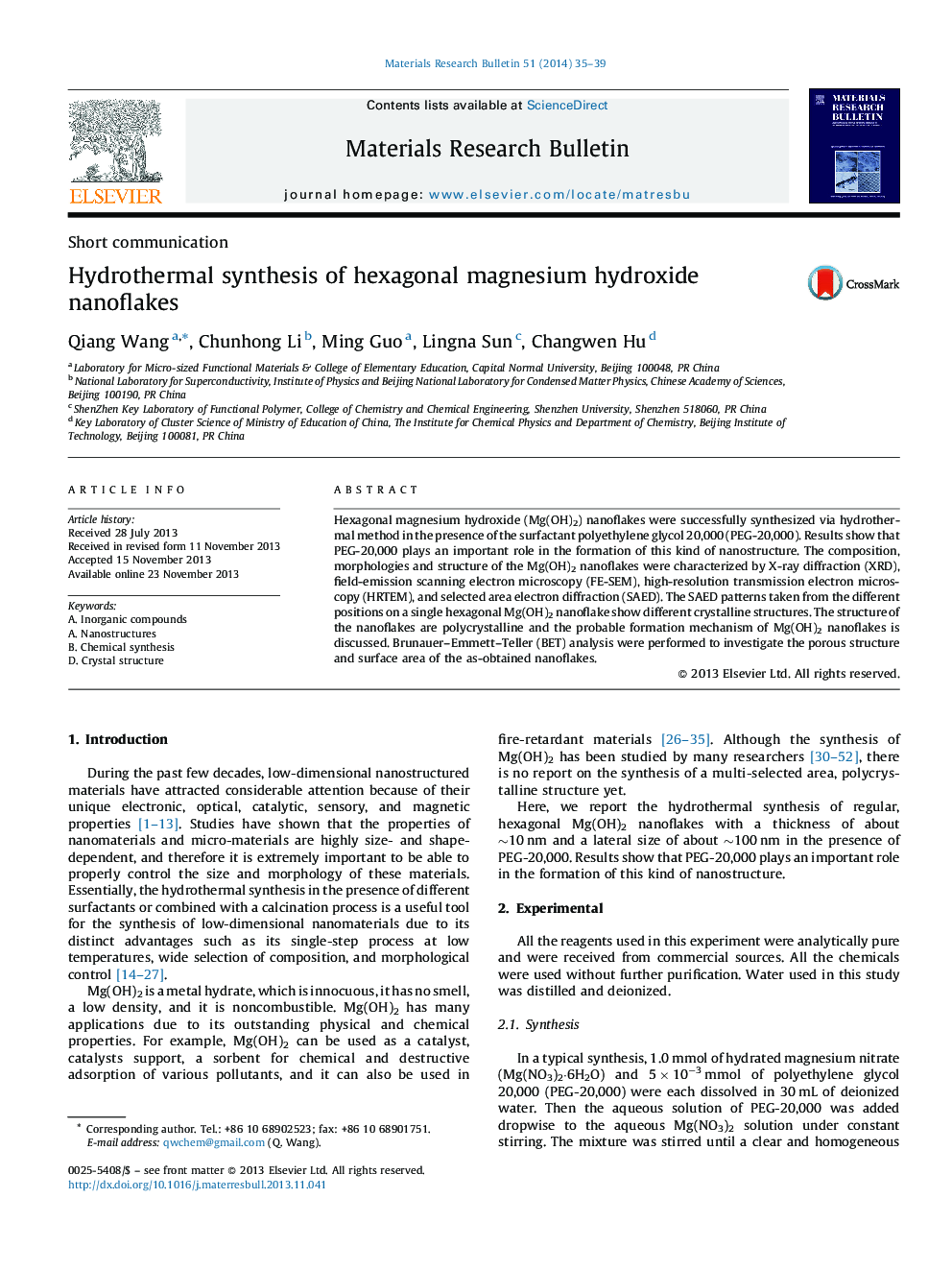| Article ID | Journal | Published Year | Pages | File Type |
|---|---|---|---|---|
| 1488226 | Materials Research Bulletin | 2014 | 5 Pages |
•Hexagonal Mg(OH)2 nanoflakes were synthesized via hydrothermal method.•PEG-20,000 plays an important role in the formation of hexagonal nanostructure.•Mg(OH)2 nanoflakes show different crystalline structures at different positions.•The probable formation mechanism of hexagonal Mg(OH)2 nanoflakes was reported.
Hexagonal magnesium hydroxide (Mg(OH)2) nanoflakes were successfully synthesized via hydrothermal method in the presence of the surfactant polyethylene glycol 20,000 (PEG-20,000). Results show that PEG-20,000 plays an important role in the formation of this kind of nanostructure. The composition, morphologies and structure of the Mg(OH)2 nanoflakes were characterized by X-ray diffraction (XRD), field-emission scanning electron microscopy (FE-SEM), high-resolution transmission electron microscopy (HRTEM), and selected area electron diffraction (SAED). The SAED patterns taken from the different positions on a single hexagonal Mg(OH)2 nanoflake show different crystalline structures. The structure of the nanoflakes are polycrystalline and the probable formation mechanism of Mg(OH)2 nanoflakes is discussed. Brunauer–Emmett–Teller (BET) analysis were performed to investigate the porous structure and surface area of the as-obtained nanoflakes.
Graphical abstractHexagonal Mg(OH)2 nanoflakes were synthesized via hydrothermal method in the presence of PEG-20,000. Results show that PEG-20,000 plays an important role in the formation of this kind of nanostructure. The SAED patterns taken from the different positions on a single hexagonal Mg(OH)2 nanoflake yielded different crystalline structures. The structure of the nanoflakes are polycrystalline and the probable formation mechanism of Mg(OH)2 nanoflakes is discussed.Figure optionsDownload full-size imageDownload as PowerPoint slide
